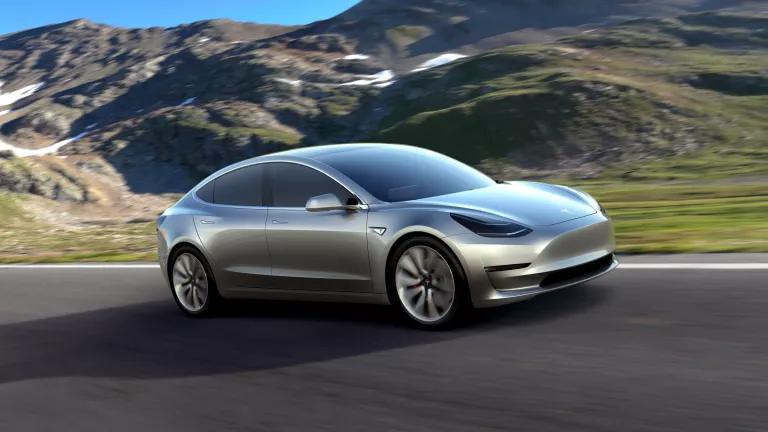The automotive landscape is undergoing a transformative shift, with electric vehicles (EVs) leading the charge toward a sustainable and efficient future. As concerns over climate change intensify and technological advancements accelerate, EVs are emerging as the cornerstone of modern transportation. This article delves into the myriad reasons why electric cars are poised to dominate the roads in the coming decades.
Environmental Impact
One of the most compelling reasons to embrace electric vehicles is their positive environmental impact. Traditional internal combustion engine (ICE) vehicles emit a significant amount of greenhouse gases, contributing to global warming and air pollution. In contrast, EVs produce zero tailpipe emissions, making them a cleaner alternative for urban areas plagued by smog and poor air quality.
While it’s true that electricity generation can produce emissions, studies have shown that EVs still offer a net reduction in greenhouse gas emissions over their lifetime compared to ICE vehicles. As the global energy grid becomes increasingly reliant on renewable sources such as wind, solar, and hydroelectric power, the environmental benefits of EVs will continue to grow.
Cost Efficiency
Electric vehicles offer substantial savings over their lifespan. Although the initial purchase price of an EV can be higher than that of a comparable ICE vehicle, the total cost of ownership is often lower due to reduced fueling and maintenance expenses.
Charging an EV is generally more affordable than refueling a gasoline or diesel car, especially when utilizing home charging during off-peak hours. Additionally, EVs have fewer moving parts, leading to lower maintenance costs. There’s no need for oil changes, and brake wear is minimized thanks to regenerative braking systems.
Governments worldwide are also incentivizing EV adoption through rebates, tax credits, and exemptions from certain fees, further reducing the financial barrier to entry for consumers.
Technological Advancements
Electric vehicles are at the forefront of automotive innovation. Modern EVs come equipped with cutting-edge technologies that enhance safety, performance, and user experience.
Advanced Driver Assistance Systems (ADAS) such as lane-keeping assist, adaptive cruise control, and automatic emergency braking are becoming standard features in many EVs. These systems not only improve driver safety but also pave the way for autonomous driving capabilities.
Furthermore, EVs often feature over-the-air software updates, allowing manufacturers to improve vehicle performance and introduce new features without requiring a visit to the dealership. This level of connectivity and adaptability is setting new standards in the automotive industry.
Energy Independence
Transitioning to electric vehicles can significantly reduce dependence on imported oil, enhancing national energy security. Electricity can be generated from a diverse range of domestic sources, including renewable energy, nuclear power, and natural gas, reducing reliance on foreign oil markets.
In regions where renewable energy is abundant, EVs can be charged using clean energy, further decreasing the carbon footprint associated with transportation. This shift not only benefits the environment but also supports local economies and promotes energy independence.
Infrastructure Development
The expansion of EV charging infrastructure is critical to the widespread adoption of electric vehicles. Governments and private entities are investing heavily in building a robust network of public and private charging stations.
In India, for instance, the government has committed to installing charging stations every 25 kilometers on highways and major roads. Initiatives like the Faster Adoption and Manufacturing of Hybrid and Electric Vehicles (FAME) scheme are providing incentives for the development of charging infrastructure and the adoption of EVs .
As charging infrastructure becomes more accessible and convenient, range anxiety—the fear of running out of battery power before reaching a charging station—will diminish, making EVs a more practical choice for consumers.
Global Adoption Trends
The global shift toward electric vehicles is gaining momentum. Countries such as Norway have set ambitious targets to phase out the sale of new ICE vehicles, aiming for 100% zero-emission vehicle sales by 2025. Other nations are following suit, implementing policies and incentives to encourage EV adoption and reduce carbon emissions .
Automakers are also embracing the electric revolution. Traditional manufacturers like Ford, General Motors, and Volkswagen are investing billions into EV development, while startups such as Tesla continue to push the boundaries of electric mobility. This collective effort is accelerating the transition to a more sustainable transportation future.
Challenges and Considerations
Despite the numerous advantages, the widespread adoption of electric vehicles faces several challenges:
- Battery Production and Recycling: The production of lithium-ion batteries, essential for EVs, involves mining and processing materials that can have environmental and ethical implications. Additionally, establishing efficient battery recycling systems is crucial to minimize waste and reduce the need for raw material extraction.
- Charging Infrastructure: While progress is being made, the availability of charging stations remains a concern in certain regions. Expanding the charging network to meet the growing demand is essential for EV adoption.
- Vehicle Range and Charging Time: Although EV range has improved, some consumers may still be concerned about the distance an EV can travel on a single charge. Additionally, charging times are longer compared to refueling a gasoline vehicle, which can be inconvenient for some users.
- Initial Cost: The upfront cost of EVs can be higher than that of traditional vehicles, though this is offset over time through savings on fuel and maintenance.
Conclusion
Electric vehicles represent more than just a trend—they embody a fundamental shift in how we approach transportation. With their environmental benefits, cost savings, technological innovations, and contributions to energy independence, EVs are paving the way for a cleaner, more sustainable future.
As infrastructure improves and adoption increases, electric vehicles will become an integral part of daily life, transforming the way we travel and interact with our environment. Embracing this change is not merely a choice but a responsibility toward ensuring a healthier planet for future generations.
Recent Developments in Electric Vehicle Adoption
- China’s Dominance in EV Supply Chain: China plays a critical role in the global EV supply chain, dominating the mining, refining, and production of key materials like lithium, graphite, rare earth metals, and battery components.
- Ferrari’s First EV: Ferrari is set to unveil its first fully electric vehicle, the Ferrari Elettrica, on October 9, marking a significant milestone in the company’s ongoing journey toward electrification.
- Cost Savings from Switching to EVs: Many individuals have reported substantial savings after switching to electric vehicles, citing lower fueling and maintenance costs as significant advantages.
- Pros and Cons of EVs: While EVs offer numerous benefits, including lower operating costs and reduced environmental impact, challenges such as higher initial costs and limited charging infrastructure remain.
FAQs
- What is the environmental impact of electric vehicles? Electric vehicles produce zero tailpipe emissions, reducing air pollution and greenhouse gas emissions. Even when accounting for electricity generation, EVs generally have a smaller carbon footprint than traditional vehicles.
- Are electric vehicles more expensive than traditional cars? While the initial purchase price of electric vehicles can be higher, they offer lower operating costs over

